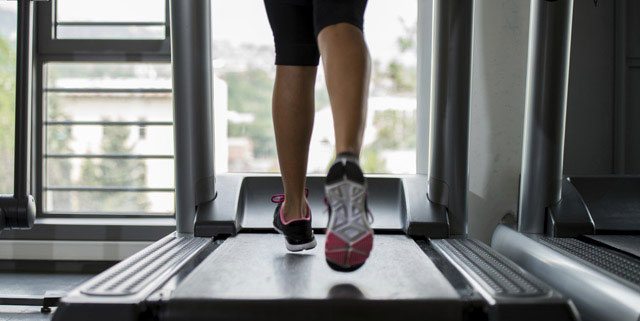Imagine customers visiting a shopping center 100 times or more per year. If that sounds crazy, consider this: 44% of health club members use their gym 100 times annually, according to the International Health, Racquet & Sportsclub Association. Of course, some go even more. So it makes sense that clubs like Equinox and LA Fitness are eyeing prime real estate amidst retail shops.
[quote]The International Council of Shopping Center’s Jesse Tron, spokesperson, says the thinking on blending fitness and shopping has shifted dramatically in the last few years.
“I think 10 or 15 years ago, you would maybe see gyms in a smaller strip center, but not in larger shopping centers,” Tron says. “Today, you can see an entire center built around the health club. You can have the fitness center, and then add in athletic apparel, maybe a health food store and smoothie bar — and now you’ve created a niche center or a portion of a larger center that is health-related. The bottom line is it could absolutely be an asset to a shopping center. There’s a crossover effect. Whether pre- or post-shopping, it’s definitely something you see occurring.”
Currently, the average consumer works out about ten times per month, according to the Cotton Incorporated Lifestyle Monitor™ Survey. When shopping, consumers visit stores an average of about twice per month, spending 97 minutes each month doing so. And for 68% of shoppers, those purchases are planned.
But what if someone needed a clean T-shirt because he did not get around to doing laundry — and a sporting goods store was right next to his gym? Or perhaps a woman wanted to shop for a new outfit for a work meeting but did not have time to drive to multiple locations.
“From an observational standpoint, here’s what the club market looks like in the Metro Boston area,” says IHRSA’s Meredith Poppler, spokesperson. “In the Boston suburbs, it’s not uncommon for affordably priced clubs to be located either as part of a shopping mall or outside in the plaza. It seems like this is more common once you get out at least 12-to-15 miles outside the city. In the more affluent suburbs, we’ve seen more high-end studios open up along shopping centers/districts.”
Kimco Realty’s Tom Simmons, president of the Mid-Atlantic Region, explained the importance of the health club/retail mix on the company’s blog page.
“From a retail standpoint, the growing strength of the industry is making health clubs increasingly important anchors in shopping centers,” Simmons writes. “For instance, Kimco has 96 leases with health clubs and gyms. In all cases, the health clubs are a vital part of our tenant mixes, drawing ongoing, reliable traffic to our centers. The growing strength of the health club market is clear….”
Tron says the trend speaks to what landlords and shopping center owners are trying to create: an experience.
“It’s no longer about being just a distribution channel for goods,” he states. “People have to have their third place — not where they work, not where they live, but this other place they go for something to do. So retail, dining and experience-based services like fitness centers are all part of the tenant mix now. It’s creating a very diverse blend, and bringing a lot of interesting combinations together.”
Generally, consumers buy most of their clothes at mass merchants (26%), chain stores (24%), department (13%) and specialty stores (10%), according to the Monitor. On average, they spend about $72 on clothes each month. However, consumers ages 25-to-34 and those making $50,000 or more per year spend significantly more than their counterparts ($84 and $93, respectively). Men actually spend more on apparel than women ($76 versus $71 per month).
Apparel stores that share shopping center space with health clubs have an equal chance of attracting male and female customers, as men and women join clubs in about the same numbers, according to IHRSA.
But a growing sub-trend in the health club market is the number of clubs creating programs that appeal to the Baby Boomer and older consumers. In its 2014 Health Club Consumer Report, IHRSA states, “These older consumers have a powerful and essential need for health clubs as they battle the challenges of aging. …Baby Boomers want to age well, they are exercising for more energy and the ability to work and/or play longer. Since the older adult market is the fastest growing segment of the population, this trend will only grow stronger and will continue for the foreseeable future.”
Further, by 2017 Baby Boomers are projected not only to hold 70% of U.S. disposable income, but they will also buy nearly half of all consumer-packaged goods (including apparel), according to a 2013 report by Nielsen and BoomAgers. Apparel stores and designers that typically appeal to the mature shopper — Ann Taylor, Tommy Bahama, etc. — might consider jockeying for space near a health club.
Regardless of member age, as clubs like Equinox Fitness take up residence in places such as the Time Warner Center in New York and the 900 North Michigan Shops in Chicago, it’s clear that retail is starting to appreciate the potential business that lies with these dedicated, repeat customers.
“It’s far more prevalent that ever before,” says Tron. “And it wouldn’t surprise me if it continued to pop up more and more.”
